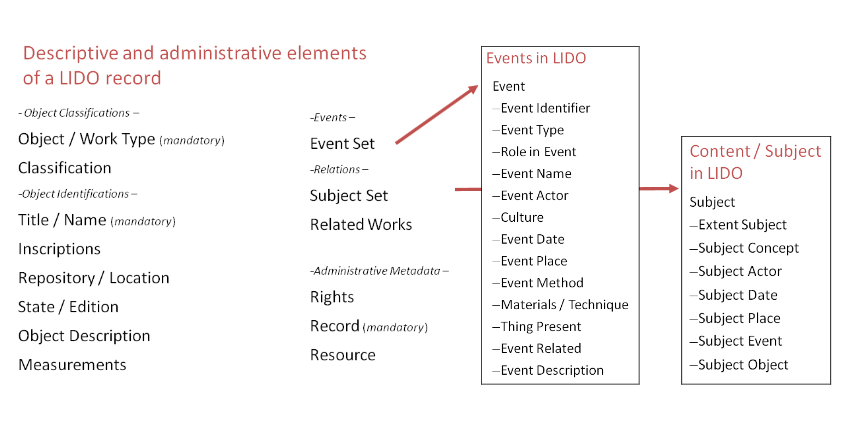Introduction and Specifications
LIDO is an XML harvesting schema intended for delivering metadata and for use in a variety of online services, from an organization’s online collections database to portals of aggregated resources, as well as exposing, sharing and connecting data on the web. Its strength lies with its ability to represent the full range of descriptive information about museum objects. It can be used for all kinds of object, e.g. art, cultural, technology and natural science. It supports multilingual portal environments by offering a language-Attribute for their elements.
LIDO is the result of an international collaboration based upon existing work and practical experience. The development of version 1.0 started in 2008 and was presented in 2010. Version 1.1 followed in 2021. It combines the CDWA Lite and museumdat schemas, and has been aligned with the SPECTRUM collections management standard. It has an event‐oriented approach and offers the possibility to work with a LOD-approach (Linked Open Data). Events can be understood as creation, collection or use of an object.
LIDO contains 14 different groups of information, of which 3 are mandatory to use. Depending on the type of object an organization wants to describe, they are free to choose between the remaining 11 groups.

The basic functionality of LIDO suggests that every group is seen as a hierarchically ordered “Wrap” with subordinate “Sets”. E.g. there is a <lido:titleWrap> with a subordinate <lido:titleSet> that contains the object data. Every “Wrap” has to be unique whereas “Sets” can occur multiple times.
Additional material
- Lido Primer (en)
- Example Records (en)
- Lido-Handbuch für die Erfassung und Publikation von Metadaten zu kulturellen Objekten (arthistoricum.net) (de)
- Lido-Handbuch (Heidelberg University) (PDF) (de) Band 1 & Band 2
- Wikipedia
Mandatory Fields for Europeana
If you plan to submit Lido metadata to Europeana you need to include these mandatory fields:
Recommended Fields for Europeana
We recommend that you fill in as many data fields as possible so that your dataset is easier to understand for a wide audience and the public. It is also much easier to link a well-described dataset to other data in the shared portal. Here are some more data fields that we particularly suggest you use.
